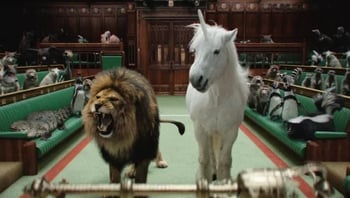The Science of Color in Animated Video Production
Discover the power of color in animation! Dive into color psychology, palette building, and light-dark balance to captivate your audience.
You're on the exciting journey of creating animated videos, right? Fantastic! You’re in for quite the adventure. Today, we'll dive deep into a part of that journey that’s as important as it is enchanting: the science of color in animated video production.
Color, that dazzling element that often gets taken for granted, is a force to be reckoned with in video making. It has the power to shape the story you're trying to tell, and the way it resonates with your audience.
Delving into the Colorscape
Why is color such a big deal? Consider this: without even realizing it, our brains associate different colors with specific feelings and ideas. This association is so deeply embedded in us that it can influence our decisions, emotions, and even our memories. In video making, color helps set the mood, highlight critical elements, and evoke emotions. So, when you decide the colors for your animation, you're doing more than just painting the screen. You're actually creating an atmosphere, a world that your audience will step into.
Now, let's break down the psychology of color and how it can help guide your creative process.
The Power of Color Psychology
Each color comes with its psychological baggage. Reds typically exude energy, passion, and danger, while blues denote trust, peace, and reliability. Greens often symbolize growth and harmony, while yellows are usually tied to happiness and optimism. And, of course, these are just the tip of the iceberg; different shades and tints can evoke a whole spectrum of emotions.
For example, if you're creating an animated video about a serene underwater adventure, blues and greens would be the obvious choices to elicit feelings of tranquility and mystery. Conversely, if your video is about a daring space rescue, you might lean more towards reds and oranges for excitement and tension.
Remember, though, the cultural context matters. Color associations can vary widely from culture to culture. Make sure to do your homework about your target audience's cultural background, so you're speaking their color language!
Building Your Animated Video’s Color Palette
Alright, you've got a sense of what each color can represent. But how do you start building a palette for your video?
First, think about the mood you want your video to set. Is it a bright, upbeat adventure, or a suspenseful, edge-of-your-seat thriller? The emotional undertones of your video should be your color palette’s starting point.
From there, choose one or two dominant colors that fit that mood. These will be the backbone of your palette. Then, add some complementary colors. These should balance out your main colors and add depth to your visuals. Don't be afraid to experiment until you find a combination that feels right!
Remember, consistency is key. Keeping a consistent palette will help ensure your video is visually cohesive and that it communicates your story effectively.
Working With Light and Darkness
Just as colors carry weight, so does the balance of light and darkness in your video. Brighter scenes can convey feelings of joy, excitement, or openness. In contrast, darker scenes often signify danger, mystery, or sorrow.
By carefully adjusting the levels of light and dark in your video, you can create a stronger sense of mood and place. It can also add a level of drama to your animation, turning ordinary scenes into extraordinary ones.
Bringing it All Together
We've covered a lot, but remember: the science of color in animated video production isn't an exact science. It's part art, part intuition, and part experimentation. Don't be afraid to play around with your color choices, tweak your palette, and adapt as your vision evolves.
And at the end of the day, the most important thing is to tell your story in a way that resonates with your audience. Colors are just one of the tools you have at your disposal to do that. So go ahead, get your hands dirty, mix those colors, and start creating!
In the world of animated video creation, color is your friend, your paintbrush, your guiding star. With an understanding of color science, you're well on your way to creating videos that don't just tell stories, but make your audience feel those stories.
Written by Jonathan English CEO for Venture Videos — a full-service video production agency that specialises in producing creative videos & campaigns that get real results.


.webp?width=350&height=425&name=ezgif.com-gif-maker%20(48).webp)



/creatives20-20motion20designers20optimised20webp_compressed.webp?width=350&height=425&name=creatives20-20motion20designers20optimised20webp_compressed.webp)





















